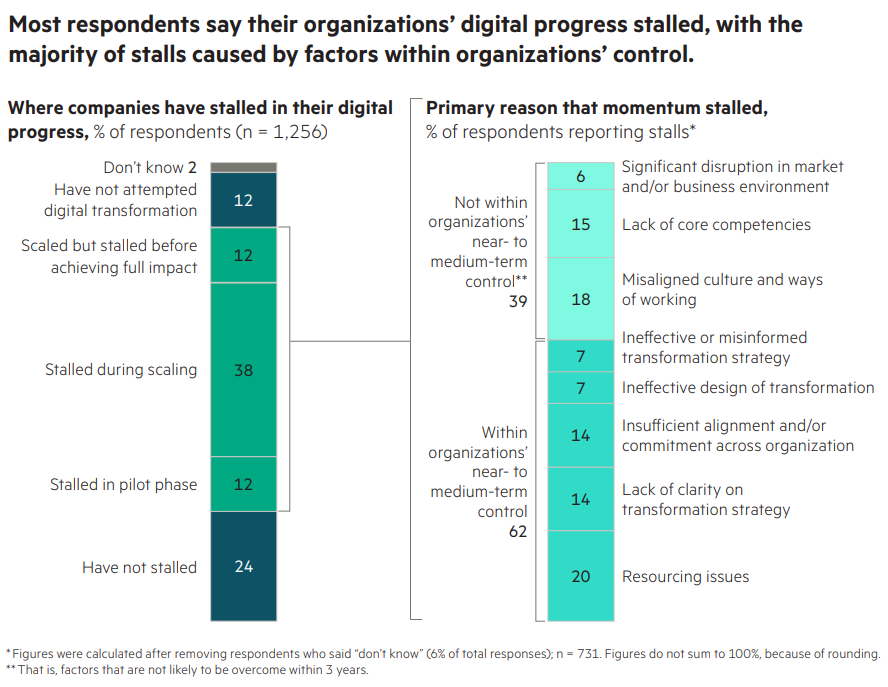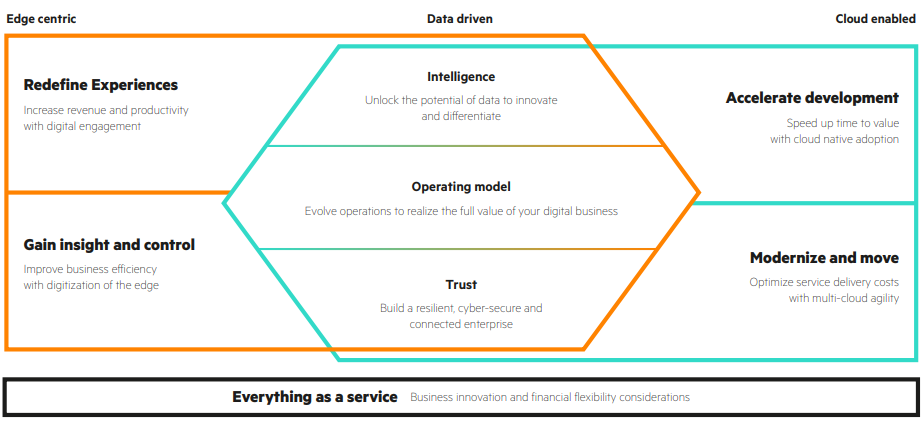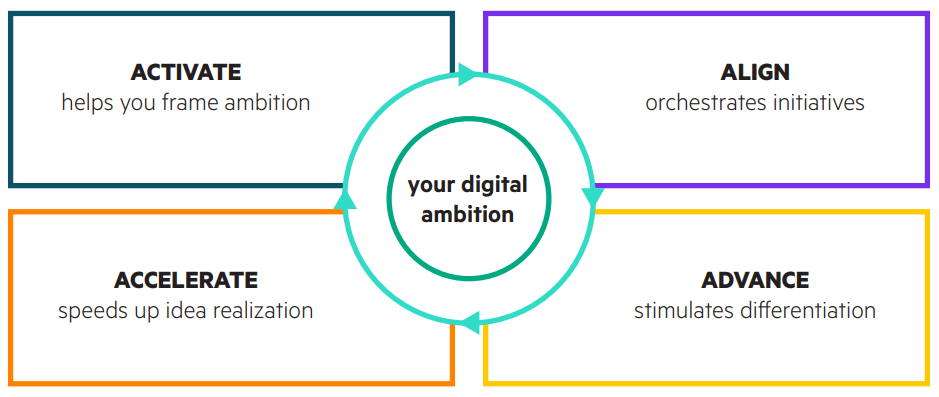
HPE Pointnext Services
Expertise to accelerate your digital transformation

More pricing below, click here!
Overview:
Your business depends on overcoming IT challenges and adapting to new data sources and business models. Successfully transform with modern solutions for cloud, AI, and edge---all while training your workforce and adopting tools that will allow you to efficiently operate in new environments.
Transform
Accelerate innovation and achieve your desired outcomes with strategic help from their experts. HPE will work with you to design and implement technology solutions, optimize processes, smooth skill gaps, and find the right financial model for your business. Areas of particular expertise include:
- Cloud services: Bring the cloud experience to all your apps and data with hybrid cloud transformation.
- Edge services: Harness the power of data at the edge to transform the way your business interacts with customers and employees.
- IT modernization services: Modernize IT and data centers with automation, and container technologies.
- AI and data driven services: Migrate to unified and secured data platforms. Accelerate AI adoption with a carefully curated ecosystem of partners.
Operate
Free your IT team from day-to-day heavy lifting so they can focus on high value business goals. Work with HPE to automate, optimize, and scale your IT and cloud operations to become modern, fast, and agile. HPE will help you:
- Integrate technology: Bring all of your IT---both on-prem and cloud---together under one team, giving you one place to call for all of your needs. Manage and eliminate interoperability issues and create a stable IT that is at peak performance. Easily integrate multiple vendor technologies, operating systems and business applications.
- Streamline delivery: Ensure that IT ops is fast, agile, and delivering at peak performance by streaming processes to drive simplicity and efficiency. Manage your IT with a cohesive strategy for both on prem and public cloud.
What is Digital Transformation?
Most would agree that digital transformation (DX) today relates to anything from IT modernization to digital optimization, capability transformation programs, and creation of new digital business model value streams. Many organizations, in fact, 82% of CEOs have a digital transformation or management initiative underway.1 However, similar to the buzzword “artificial intelligence,” digital transformation is now used extensively, but with various meanings across different industries, enterprises, and lines of business. The truth is there is no consistent and contextualized definition. Hewlett Packard Enterprise, however, does bring a consistent approach to DX in order to have your technology capabilities match to your business goals.
Your organization is running digital projects and programs, though this does not mean you are a digital business, at least, not yet. There is a distinction between digitization of, for example, processes and products and digital business transformation that elevates your business model with technology capabilities for greater value creation. The latter, among other outcomes, will boost customer experience (CX) as it is overtaking price and product as the key differentiator forming the new battleground.
According to Hewlett Packard Enterprise, enterprises of the future need the capabilities to operate from edge-to-cloud. The edge is where the CX and the explosion of data are happening—an intersection of billions of people and places and trillions of things is generating unimaginable amounts of data. The opportunity to bridge digital and physical worlds to redefine experiences is the task of DX. This is achieved by an ability to redefine the CX through the IT service supply capability basis, making it more likely to lead to market shifts and new value streams. Placing CX at the core of the enterprise operating model requires core system improvements that provide agility and efficiencies along the IT digital value chain.
DX, then, is the basis of addressing the need for an evolved operating model that shapes the implementation of your own flavor of becoming a digital business.
Do you think DX is not for you? Out of the boardroom, a majority of enterprise management does not only believe their industry will change but also believes it will be unrecognizable compared to today’s industry.

Figure 1: Expectation of industry disruption over time
Your clearly defined digital ambition is key to have a clear direction and focus of your DX targets. You spend too much time meeting IT budgets and initiatives in a non-coordinated way. They remain as traditional optimization-based initiatives rather than transformation-based initiatives. Greater value is derived through the effective design and alignment of DX strategy—both in terms of budgetary spend and impact of DX on efficiency and agility. Having a plan is one thing, but successfully delivering DX is another. Statistically, the gap between your aspiration and your achievement is widening in attempting digital business transformation, principally because the internal skills sets are not in place to see the initiatives through (Figure 2).
In contrast, you can both propel and de-risk your progress by orchestrating your digital initiative landscape more effectively, identifying what to fast track from an initial idea into acting as a building block that other ecosystem improvements can leverage. The caveat being, this has to be driven from the top of the organization. Without a shared ambition and an established guiding coalition, your digital progress will continue to stall and targeted outcomes will be missed.

Figure 2: Factors causing lost momentum in digital transformation
Digital Journey Map:
If digital transformation is the means to redefine customer experience, then the edge-to-cloud connection between that experience and the technology capability to provide it needs to be framed, providing the canvas for your business, operating and infrastructure models to be interlinked.
HPE has a proven approach, unique in the marketplace, to help you with your digital transformation journey. Together with your HPE Digital Next Advisor, you can frame the experience using the Digital Journey Map. Organizations across the world and from all industries are taking advantage of this framework and are mapping their DX efforts onto the Digital Journey Map, using the model to navigate through the disruption this era brings.

Digital Journey Map
The Digital Journey Map identifies four DX related business goals toward becoming a digital business and through using the framework, it maps the necessary technology capabilities to deliver those goals. The business goals are:
- Redefine experiences to increase revenue and productivity with digital engagement
- Gain insight and control to improve business operations with digitization of the edge
- Accelerate development by speeding up time to value with cloud-native adoption
- Modernize and move to optimize service delivery costs with multi-cloud agility
Through the edge-to-cloud framework, the business goals create solid linkage and by extension so do the technology capabilities. In addition to the business goals, there are certain elements, common enablers to each of them that also need to be addressed. To realize the full value of your digital business, you have to evolve your current operating model. By unlocking the full potential of your data, you are gaining intelligence to innovate and differentiate yourself from your competitors. You are handling trust by building a resilient, cyber-secure, and connected enterprise to enhance your digital ambition. As markets and your customers move to consuming products and services as a service through innovation, you also need to address the service supply chain in an everything-as-a service consumption model for scaling, efficiency and agility.
Pricing Notes:
- Pricing and product availability subject to change without notice.

